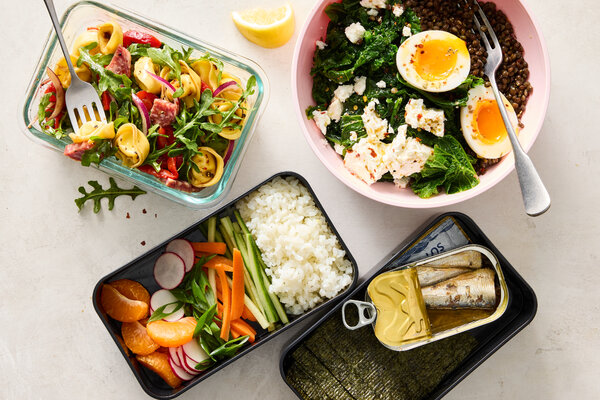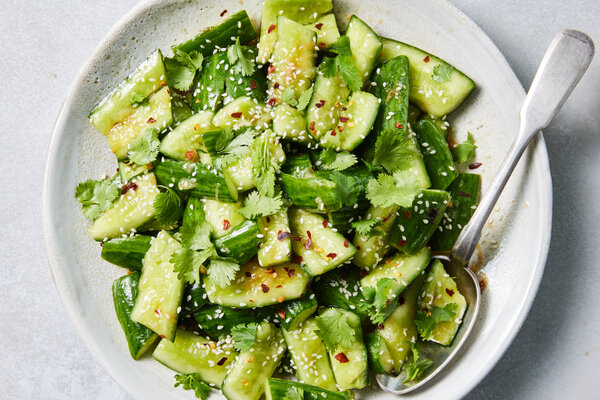Be a better “bring your lunch to work” person with these expert tips.
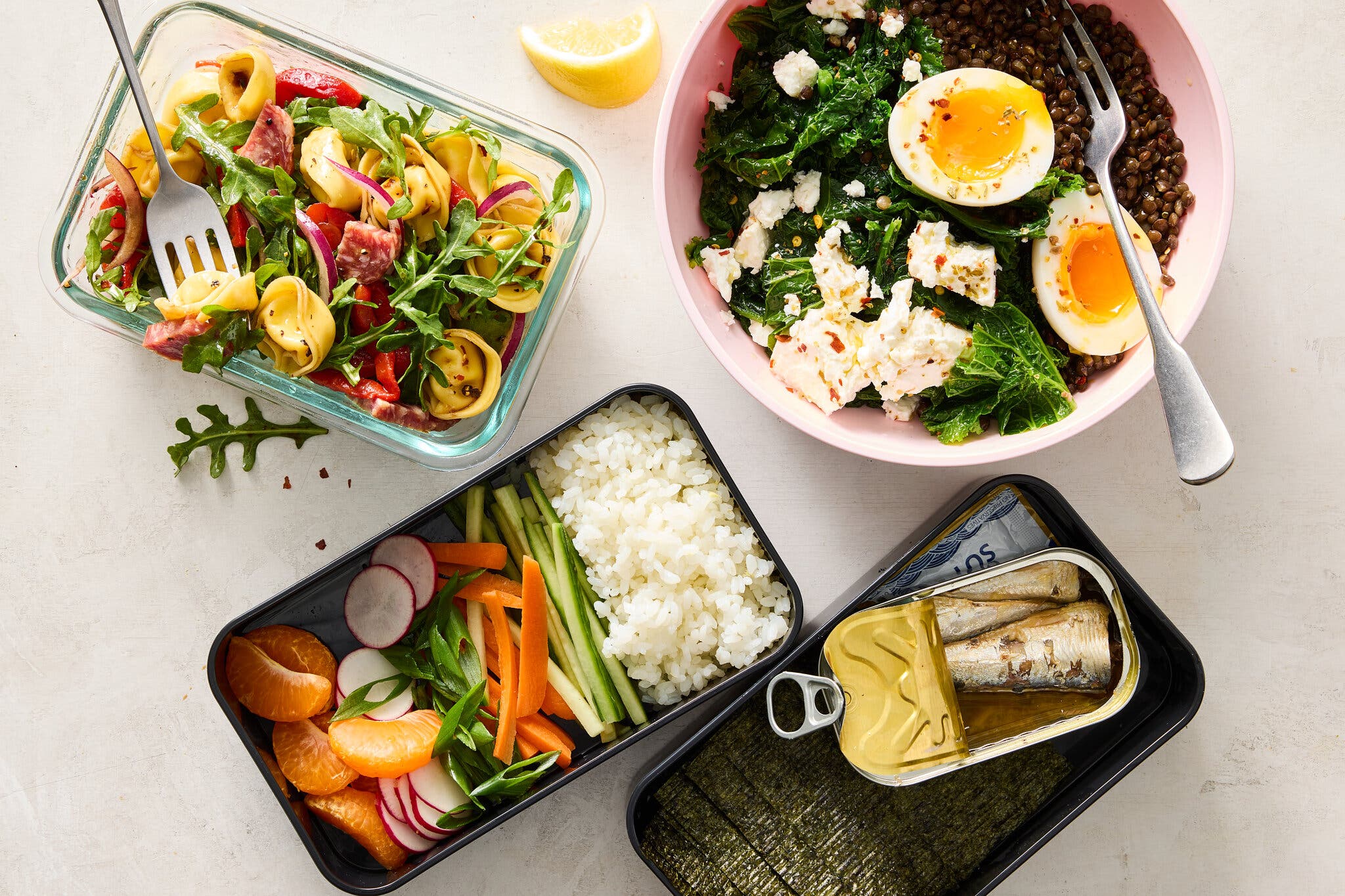
Make a lunch you’ll dream about.Mark Weinberg for The New York Times. Food Stylist: Michelle Gatton.
Eating lunch is a highlight of the day. Making lunch, though, is complicated.
Along with the decision-making, shopping, cooking and cleaning that come with making any meal, work and school lunches need to be easy to transport, use few utensils and vessels, and fill you up without slowing you down. And, ideally, they also don’t take a long time to eat, make a mess or stink up the place.
With all of that to consider, you could just buy lunch or snack until dinner. But making your own lunch can be cheaper, healthier and — with these few principles — easy.
Here’s how to be a better bring-your-lunch person.
Make a big batch ahead
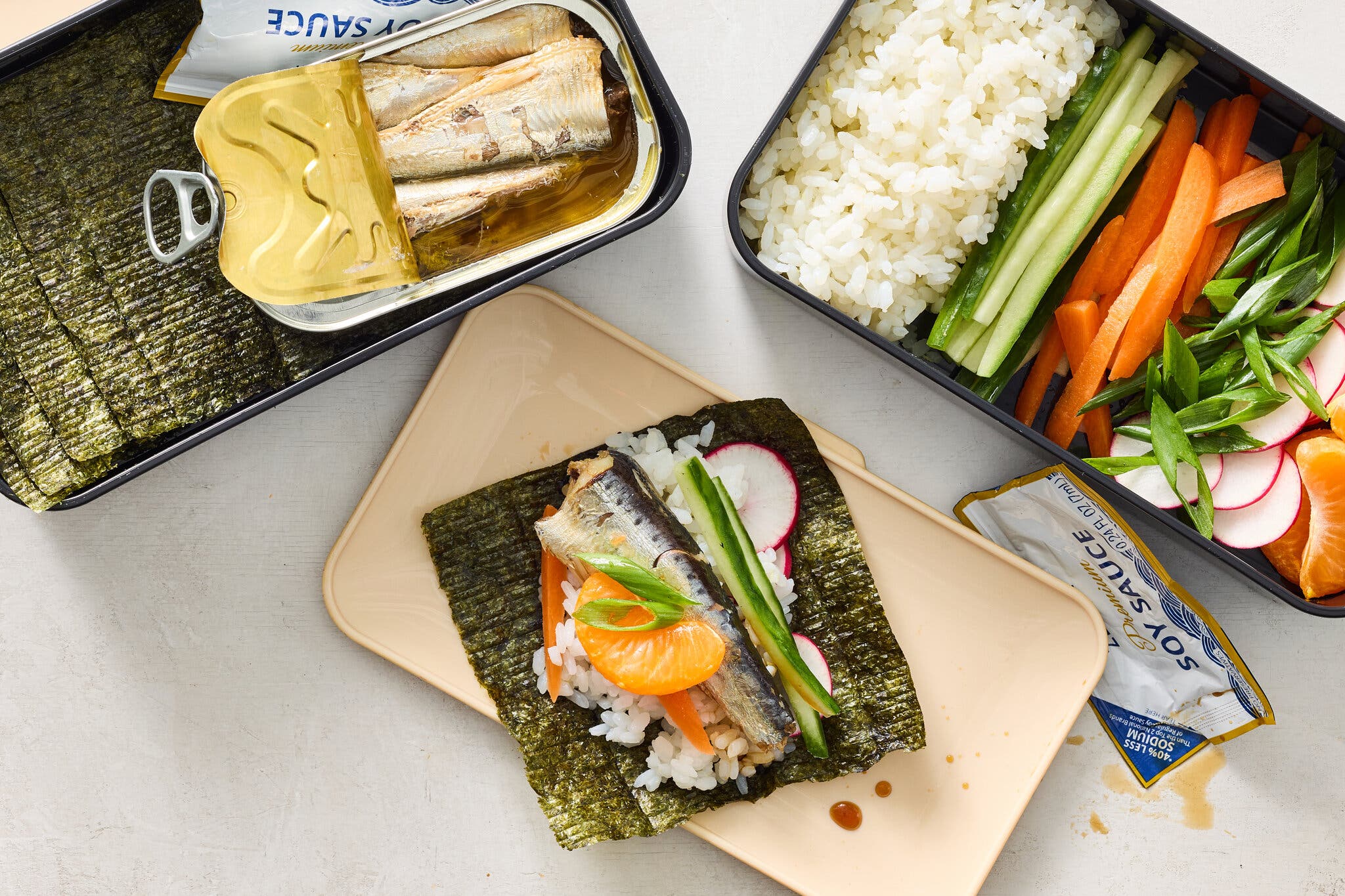
Mark Weinberg for The New York Times. Food Stylist: Michelle Gatton.
When you have an hour, cook a big batch of a recipe that won’t get dull or soggy after a few days in the refrigerator. Then, pack lunches into servings you can grab as you’re running out the door each morning. (Wirecutter has recommendations for the best food storage containers, in case you need suggestions.)
If you think boredom may set in toward week’s end, vary the meals slightly when packing them. Use a different mix of vegetables or toppings: olives here, feta there, fennel and citrus in a tinned-fish hand roll, celery and wasabi in another. (And if you’re worried about the smell of tinned fish, you could always swap it out for avocado.)
Or add sparkle with a stash of condiments at the office, like hot sauce, vinegar, hot honey, Tajín, everything bagel seasoning and furikake.
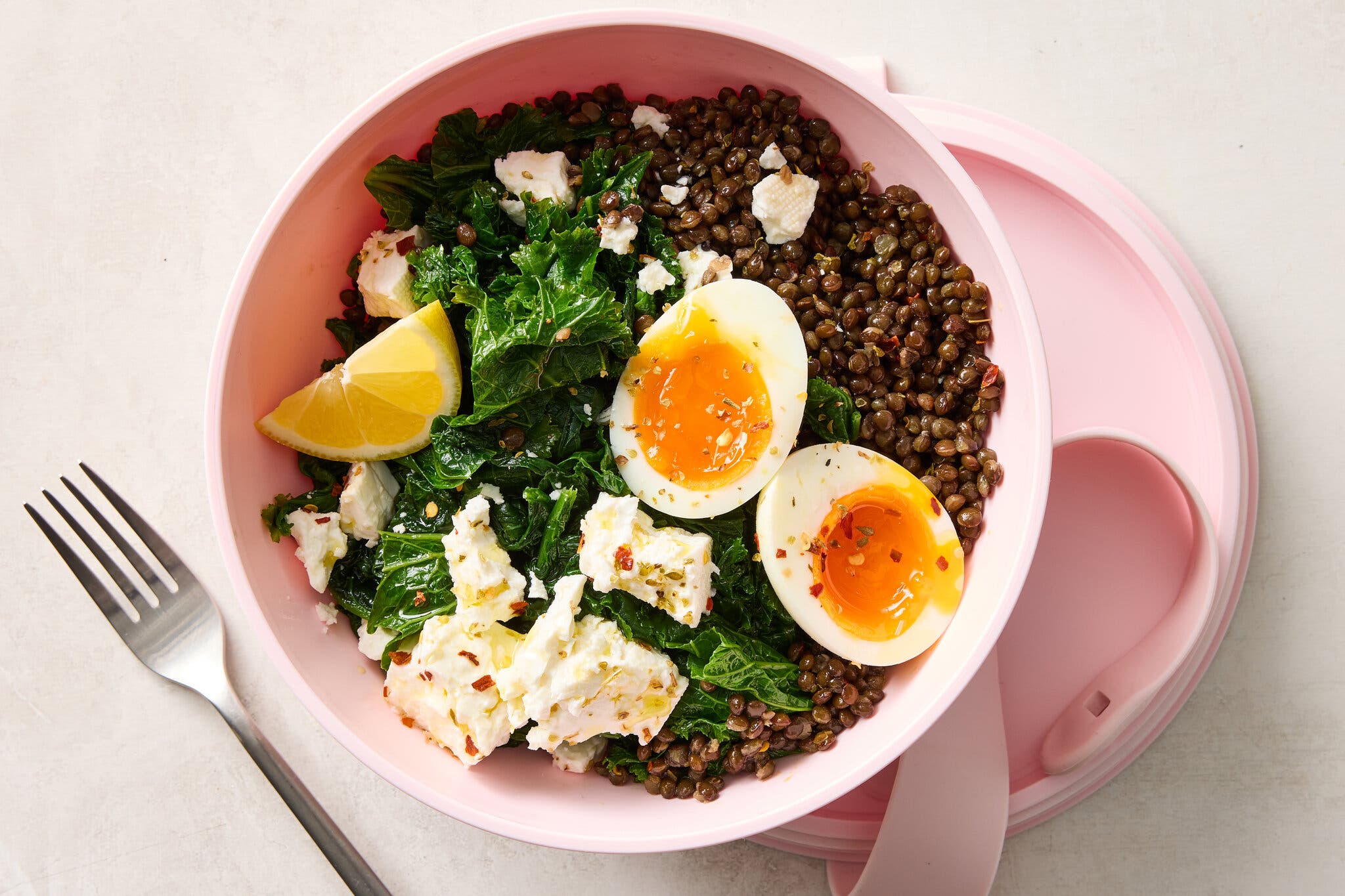
Mark Weinberg for The New York Times. Food Stylist: Michelle Gatton.
Lunch is your midday treat, so cook it as such. When ordering out is an option, make sure whatever you bring with you is something you’ll really want to eat. What is it about the takeout pulled pork sandwich, spicy noodles or burrito that draws you in? Incorporate those elements into your homemade lunch so that you’ll be so excited to eat it, you’ll crack open your lunch box at 11:15 a.m. Maybe it’s a slab of salty feta, a crunchy pickle, guacamole, a chewy noodle, a nice piece of cut fruit or some salami!
Skip the office microwave
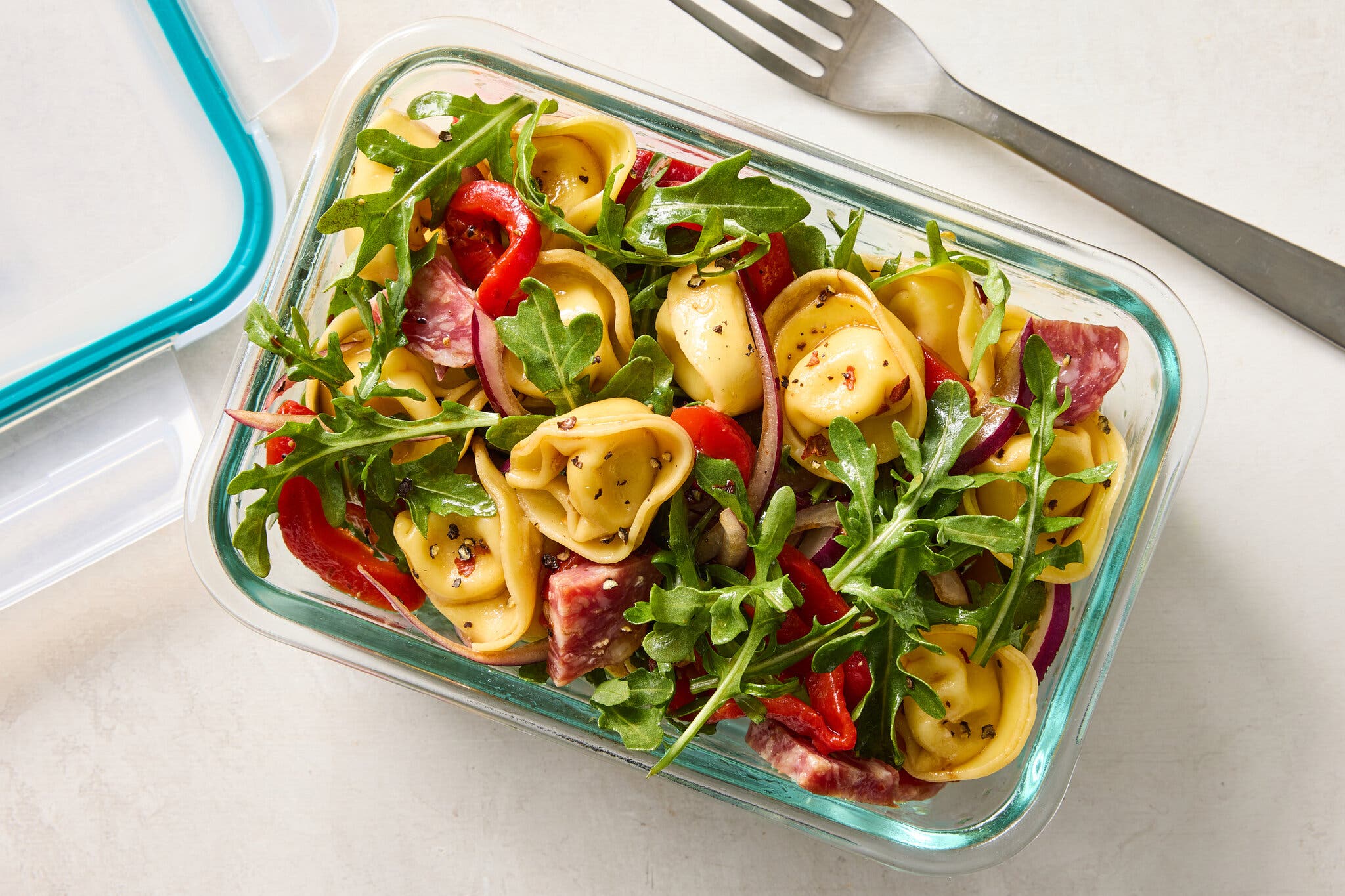
Mark Weinberg for The New York Times. Food Stylist: Michelle Gatton.
All that stands between you and a hot, homemade lunch is a zap in the office microwave. But in reality, a free five minutes might be elusive. And even if you can get to the kitchen, are you willing to gamble the success of lunch on the cleanliness of that microwave?
To avoid eating cold chicken noodle soup, pretend your work lunch is an indoor picnic and bring something that’s great right from the fridge or at room temperature. (That includes chicken tenders and thinly sliced steak.)
Be flexible
One strategy for handling lunch is to double or triple dinner, but there is a snag: Dinner might not travel well and then you’re eating an inferior version of something you ate a mere 16 hours before.
Instead, use lunch to repurpose leftovers and stray produce by making meals with flexible formats, such as bowls with various components, salads and hand rolls.
So what do I make?
-
Sturdy, already-dressed salads. A separate jar of dressing will spill in your tote. So make an easy chicken salad, kimchi bibim guksu, a roasted squash and bacon salad or a quinoa and broccoli spoon salad.
-
Bowls with a mix of grains, vegetables, protein and big-flavor flourishes. So make sabich bowls, grain bowls with sauce moyo, sweet chili grain bowl with tofu, or millet with corn, mango and shrimp.
-
Hand rolls or other rice-and-nori dishes. So make kimbap, salmon onigiri or soy-glazed salmon hand rolls.
-
Snack plates with protein-packed dips (include your favorite sandwich’s fillings and avoid soggy bread on a days-old sandwich). A few ideas: herby cottage cheese dip, everything bagel smoked salmon dip, white bean dip with cumin-chile oil and this avocado, edamame and yuzu dip with furikake.
Follow New York Times Cooking on Instagram, Facebook, YouTube, TikTok and Pinterest. Get regular updates from New York Times Cooking, with recipe suggestions, cooking tips and shopping advice.






